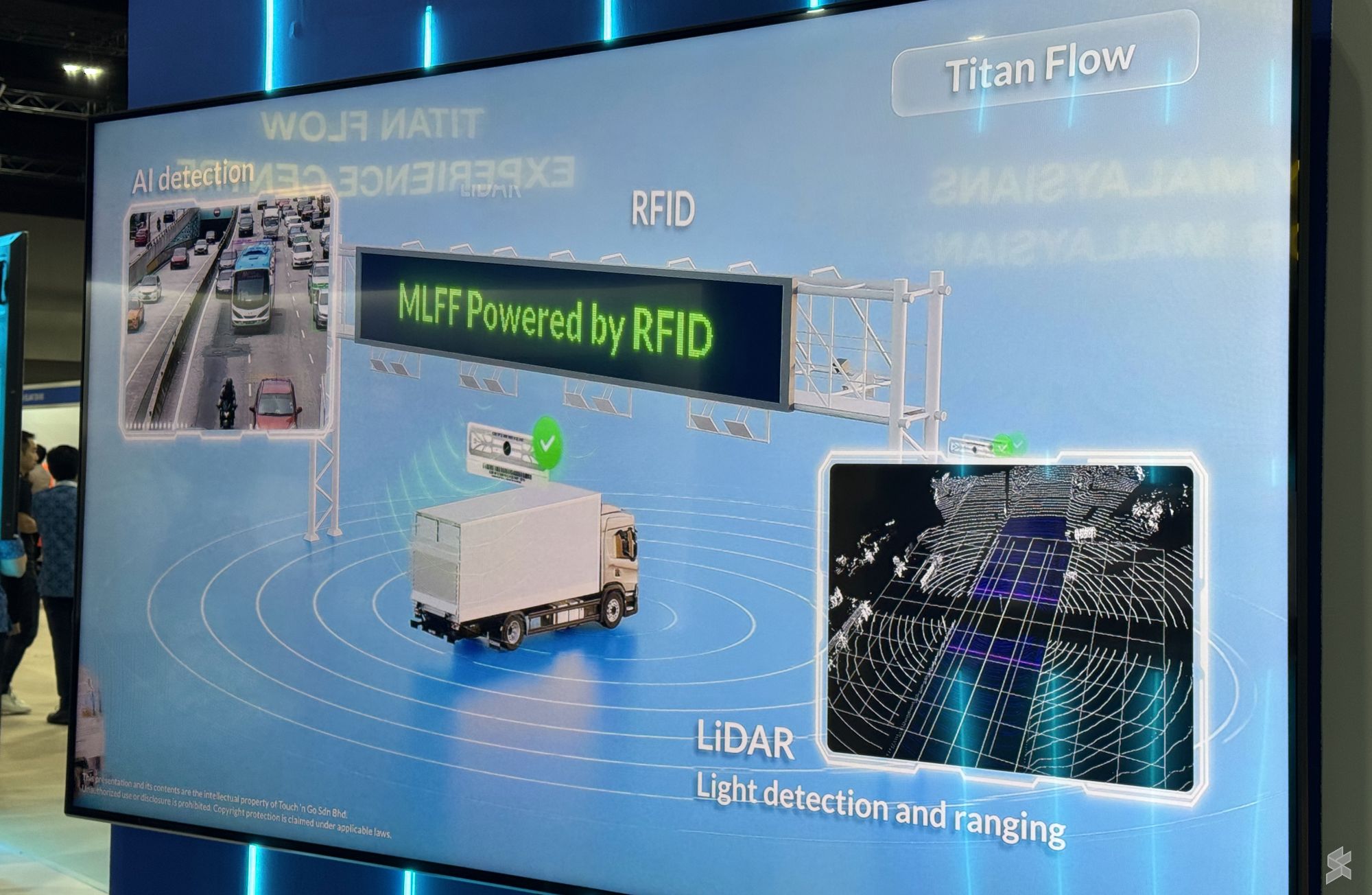Touch ‘n Go (TNG) has expressed is readiness and commitment to deliver a barrier-less tolling system in Malaysia with its home-grown Multi-Lane Fast Flow (MLFF) platform. Called Titan Flow, the MLFF system is being showcased at MyARTTE 2025 in MITEC.
According to TNG, they are ready to deploy a smart, barrier-free tolling systems that are accurate, scalable and enforcement ready. Its payment mobility ecosystem which includes TNG eWallet, current serves over 24 million eKYC (electronic Know Your Customer) verified users and over 4 million RFID motorists.
It added that its current user base provides a strong and secure foundation for nationwide digital tolling and a seamless open payment experience.
Titan Flow MLFF System is now running at LKSA

TNG’s Titan Flow is a fully integrated end-to-end MLFF system that is said to be developed by Malaysians for Malaysians and beyond. It uses Radio Frequency Identification (RFID) technology as the primary detection technology, combined with Automatic Number Plate Recognition (ANPR) and 3D LiDAR, enhanced by AI for real time classification and enforcement accuracy.
It explained that Titan Flow uses AI to distinguish vehicle types more precisely and classify them automatically. This results in improved toll accuracy and fairness for all road users.
When paired with 3D LiDAR, the system is able to analyse the vehicle’s dimensions, position and motion patterns, to ensure highly reliable detection even under complex traffic and severe tropical weather conditions.
The Titan Flow platform is also capable of supporting future capabilities such as dynamic tolling pricing, where rates can be adjusted dynamically based on traffic conditions or vehicle class to improve road efficiency.
Dual RFID Antennas and ANPR Cameras deployed for each lane
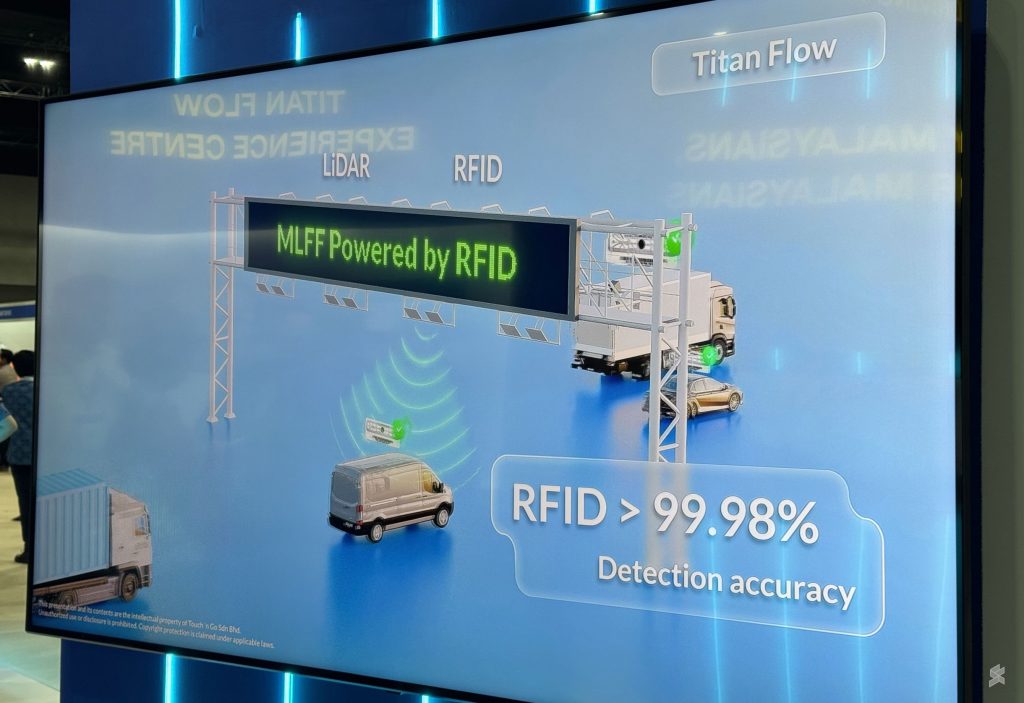
At the moment, TNG is currently running a Proof of Concept at Kemuning-Shah Alam Highway (LKSA) and they have deployed a gantry at about 600 metres away from Alam Impian Toll Plaza.
The system utilises Titan Pro RFID Reader and Avior RFID Antennas from Star Systems International (SSI) along with high resolution Smart+ Tattile ANPR cameras. According to TNG, the system is now running and it can detect existing TNG RFID tags with detection accuracy of over 99.98%.



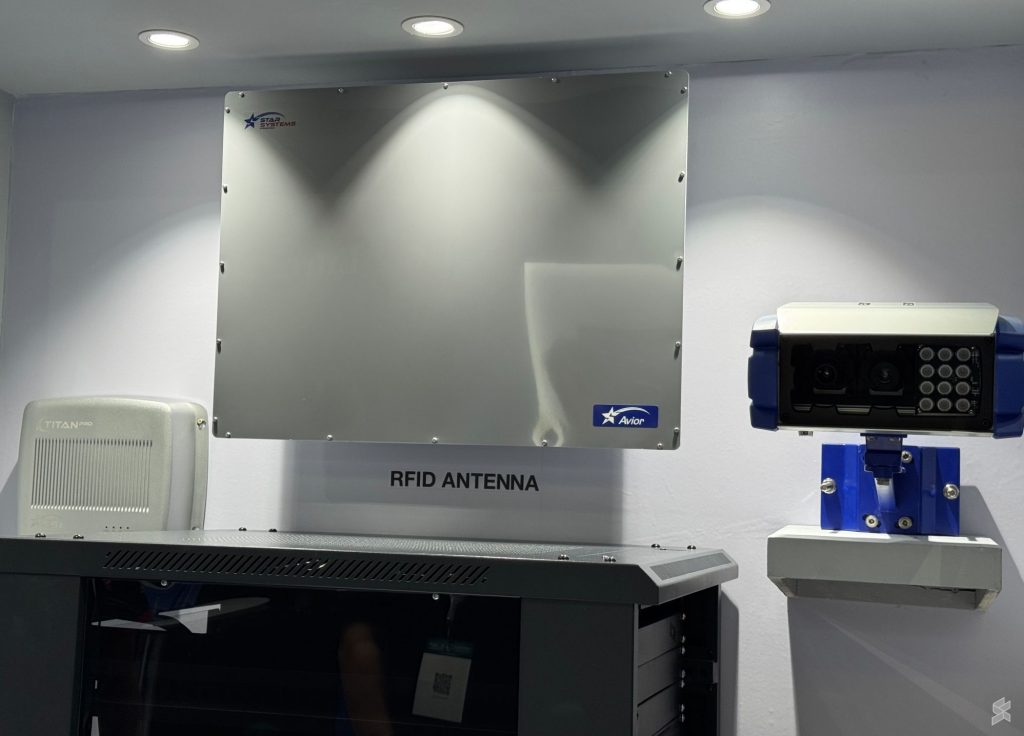
For the POC at LKSA, they have installed two RFID antennas and two ANPR cameras per lane for greater redundancy. The RFID Antenna is capable to detect vehicles travelling exceeding 200km/h and the fastest they have recorded so far is 168km/h.
Meanwhile, the Smart+ Tattile camera claims to be able to capture vehicles travelling at up to 320km/h with over 99.5% accuracy.

You can check out Titan Flow’s capability through a live dashboard at their booth during the MyARTTE 2025 event.
As you can see below, it is able to detect the vehicle number, vehicle class, speed as well as the vehicle make and colour.
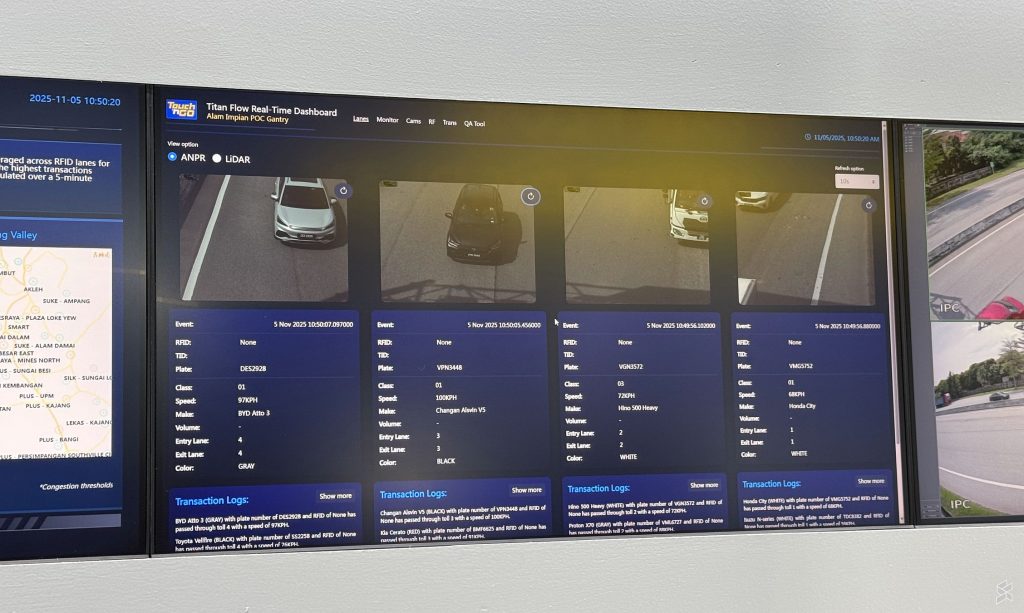

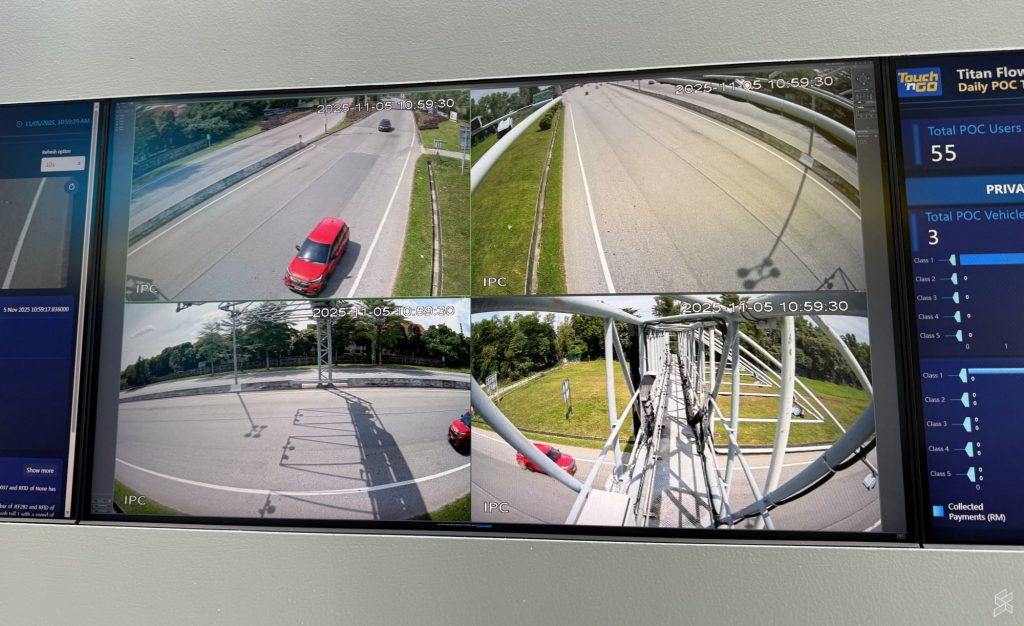
From the showcase, TNG wants to demonstrate that it is able to enable MLFF seamlessly with its existing TNG RFID platform which has over 4 million registered users.
Introduced in 2018, TNG initially offered 1 million TNG RFID tags for free starting with its pilot program. The TNG RFID tag itself is now in its 3rd generation and is now locally made in Kulim.

The RFID tag is said to be robust enough to work in various scenarios including heavy rain, intense glare and even in muddy conditions. They added that many of the first generation TNG RFID tag customers are still using the same tag until today and the tags have no expiry date.
TNG currently handles over 371.3 million RFID transactions annually from just 616 RFID lanes deployed so far.
Clear legal framework required before MLFF can be implemented
While different highways are testing various MLFF technologies at the moment, the biggest barrier to deploy MLFF is the lack of a legal framework to address toll evaders. With the toll barrier (aka “palang”) removed, who will be accountable for leakages and outstanding toll payments? Will the government take responsibility and go after the toll evaders?
The highway concessionaires would need to be assured that tolls can be collected effectively as even 1% of leakage is a substantial amount.
Malaysia could follow other countries by imposing fines and charges for unsettled tolls, and making evaders pay in full before they can renew their vehicle’s road tax. To get tough on toll evaders, overdue toll payments could be recorded into CTOS which will impact their financing rating.
Another issue is also the lack of enforcement on standardised number plates. The use of non-compliant fonts or unreadable number plates will be a challenge for ANPR and this needs to be addressed to ensure accurate validation.
Malaysia recently introduced the JPJePlate for new electric vehicles which is a step in the right direction. However, the requirement and installation process are not strictly enforced as we could still see newly registered EVs on the road with the old black number plates.
